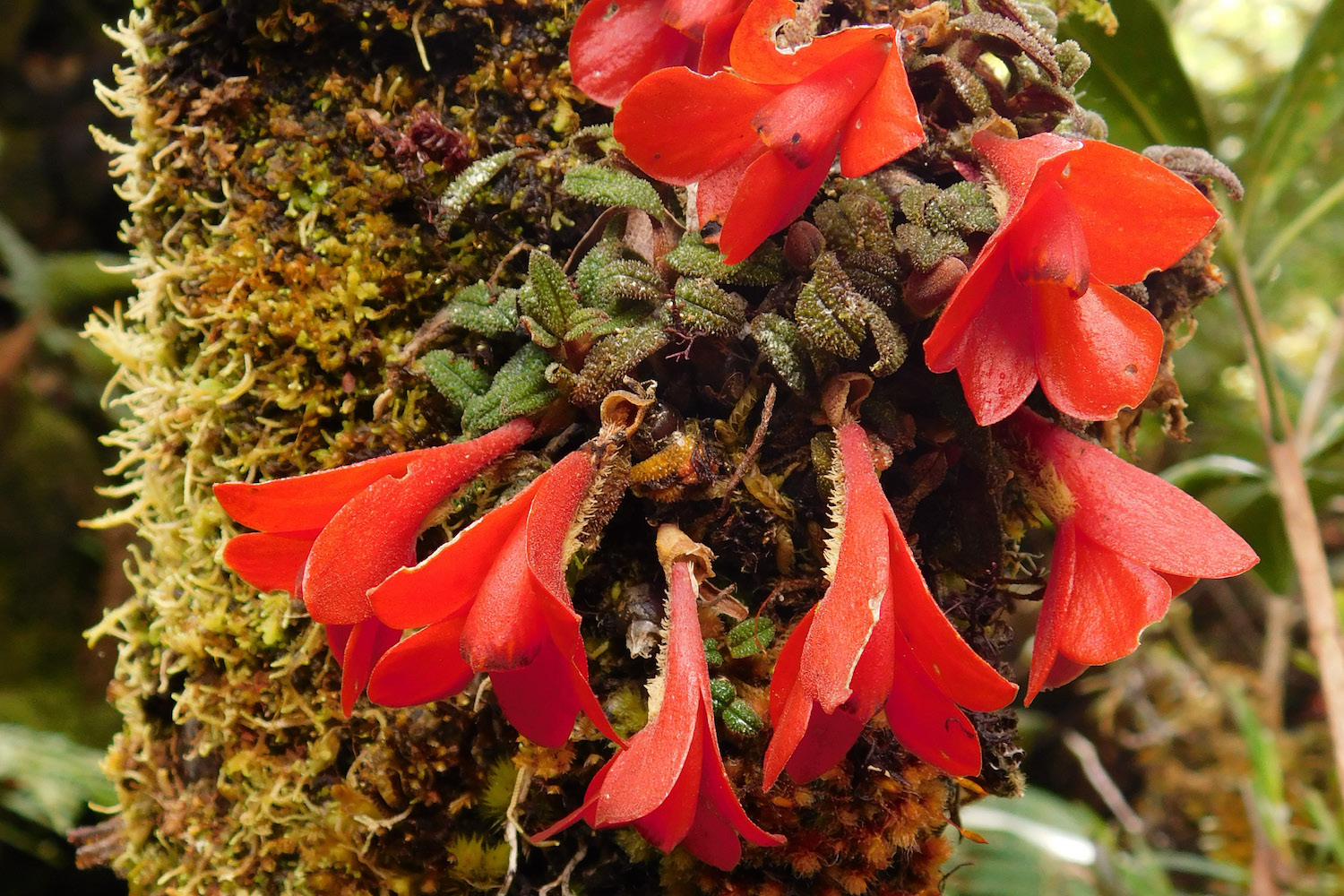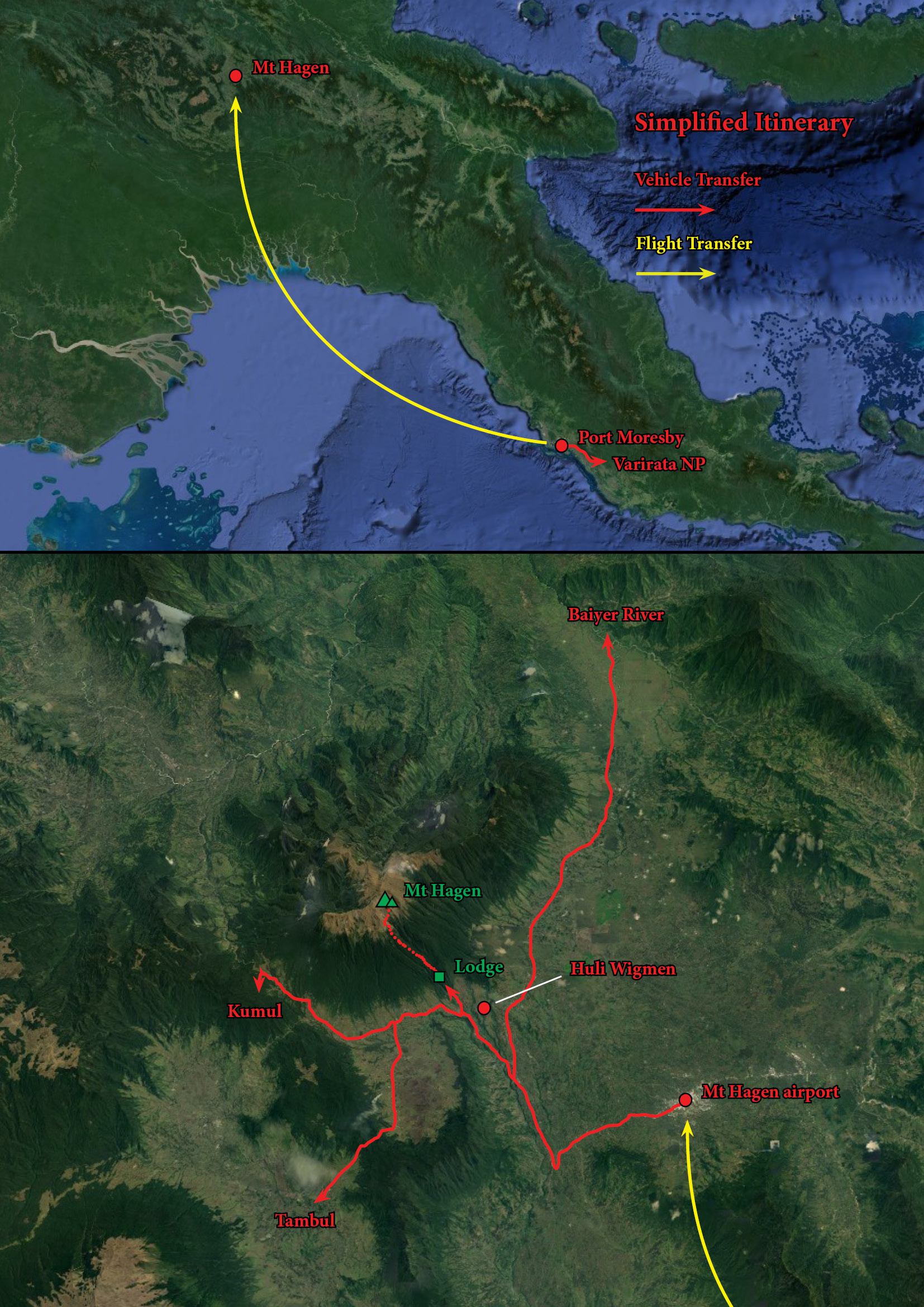Papua New Guinea’s Tribes and Birds of Paradise
Key Facts
COST: We organise this expedition on a bespoke tour basis. We can set up this itinerary for private groups up to 16 people. The cost depends upon the group size. Please email us for a quote.
START POINT: Port Moresby, Papua New Guinea
END POINT: Port Moresby, Papua New Guinea.
GROUP SIZE: 6–10 (on double/twin room basis – single room supplement available)
DATES: To fit your preference. Please email us for details.

This trip includes a traditional mumu feast, in which, local foods are cooked in an earth-oven (using red hot stones). This event brings together the local community, and allows us to witness centuries-old customs and ceremonies. Usually, at the mumu, locals bring wooden artefacts, stone tools, bows and arrows and other items which they wish to sell or trade, offering an unique opportunity for collectors of tribal wears to purchase items.
Based out of our comfortable, locally-run Magic Mountain lodge (so called for a abrupt peak nearby, which is locally believed to be magic), we make daily journeys to different highland destinations always in the company of indigenous guides from local tribes and traditional landowners.
Getting there: Many international airlines offer flights to Port Moresby (search www.skyscanner.net ). There are direct flights from Singapore to Port Moresby with Air Niugini (visit www.airniugini.com.pg ) and PNG Air (visit www.pngair.com.pg ). If you time your flights right, you can fly to Singapore and then continue on to Port Moresby the same day, or break up your journey and have a night or two in Singapore. Alternatively, there are flights to Port Moresby from Tokyo, Hong Kong, Manila, Singapore, Cairns, Brisbane and Sydney.
Itinerary
Day 1:
We meet at Port Moresby airport (at approximately 9.00 am – exact timing to be confirmed). Check in for our flight to Mount Hagan, located at 2,400 metres elevation in the Western Highlands Province (lush, cool climate during the day, cold at night). Lunch in Mount Hagan town and visit to a fascinating local market to observe the exotic foods, fruit and customs. Transfer to our lodge (1 hour from Mount Hagan). Depending upon our arrival time, if daylight permits, we can explore the cloudforest around the lodge in search of orchids (the highlands around Mount Hargen is famous for endemic Cyathea tree-ferns as well as epiphytic orchids, such as Pedilochilus, and forest margins for Bulbophyllum, Dendrobium, Calanthe, Corybas, Diplocaulobium, Coelogyne, Liparis and Pterostylis). Dinner and overnight at Magic Mountain lodge.
Day 2:
We have breakfast at our lodge. The breath-taking Stephanie’s astrapia bird of paradise is often sighted from the breakfast balcony of our lodge. After breakfast, we transfer to Pogla village to meet the mudmen of the Kaugla tribe. We watch a fascinating display of their mud mask dance, hear the stories behind why they adorn themselves with mud, and (usually) have the opportunity to purchase artefacts from their village. Transfer back to Mount Hagan for lunch, then transfer to Kumul Lodge, set in beautiful mossy cloudforest. We have the opportunity to see the stunning ribbon-tailed astrapia and brown sicklebill birds of paradise at a feeding platform, as well as the striking tiger parrot. We can spend the rest of the day exploring the beautiful, mossy, cloudforest trails and visit Max’s orchid garden, planted with countless local orchids including the beautiful Dendrobium cuthbertsonii and other montane species. Dinner and overnight at Magic Mountain lodge. It is recommended that we retire early this evening.
Day 3:
This morning is dedicated to the stunning Raggiana bird of paradise (which is usually one of the easier species to observe). After an early start (with tea, coffee and snacks), we drive to the birding site, which sometimes also hosts the superb and magnificent bird of paradise also, along with trumpet manucode, Jobi manucode and helmeted friarbird. Other birds of interest include yellow breasted bower bird, rainbow lorikeet, doubled eyed pygmy parrot, clamorous reed warbler, white shoulder fairy wren, great wood swallow, little grass bird, dollar bird, purple swamp hen and hooded pitohui. The pitohui is one of the few known poisonous birds, with batrachotoxin present in its skin and feathers! We have a late breakfast/early lunch, and return to our lodge. Those that are tired can spend the afternoon resting at the lodge. Those what would like to, can undertake a short trek to Kambo Falls, a small waterfall nearby. The start point is at Melfawati village, very near to our lodge. The trail is rich with cloudforest orchids, and we pass a small skull cave with spirit stones. Dinner and overnight at Magic Mountain lodge. It is recommended that we retire early this evening.
Day 4:
n early breakfast and transfer to Rondon Ridge. This involves a steep walk (approx 1.5 km) to a famous birding location on a promontory. Over 150 species of birds are known from the region, including 11 bird of paradise species, as well as a honeyeaters, white-eye, whistlers, flycatchers, fantails, warblers, wrens, cuckoo-shrike and many types of parrot. We have a good chance to see the King of Saxony bird of paradise, as well as the brown sicklebill and Stephanie’s astrapia birds of paradise. During past years, we have observed the bowers of Macgregor’s bowerbird at this site as well. We can then either return down the same trail, or undertake a more adventurous trek through the cloudforest. We have lunch at Rondon Lodge (which has a wonderful restaurant, as well as an artefact shop, a mini-tribal artefact museum, and an extensive orchid garden which we can explore). Rondon is also home to a small zoo, which has several species of macropods (including native wallabies), a tree kangaroo, cuscus and cockatoos. During the afternoon, we can visit Mt Pint’s orchid garden (home to trails planted with orchids and native plants), and nearby, we can walk to see a population of wild carnivorous pitcher plants (Nepenthes maxima). Dinner and overnight at Magic Mountain lodge. It is recommended that we retire early this evening.
Day 5:
We have another early start and return to a birding site near Rondon for a chance to see the blue bird of paradise and the superb bird of paradise. We transfer to Mount Hagen for lunch, then during the afternoon, we visit a village of the Huli wigmen to witness their spectacular tribal wigs (made of human hair and bird of paradise feathers) and striking body paints. The wigmen perform a jumping drum dance (for which they are famous), and explain the types of wigs (each one with a different status meaning). We learn why they are made, and passed down (often over generations)! We return to our lodge and have a relaxed evening.
Day 6:
No early start today! After a relaxed breakfast, we drive to Chimbu, and trek to a remote village to visit a cave to see the cultural display of the skeleton men (adorned in black soot and white ash, resembling skeletons). We hear the story of how this tradition originated and visit their village. Overnight in a lodge in Chimbu (note: we bring clothing and personal gear for 1 night).



Day 7:
We can undertake a mountain trek this morning through the beautiful alpine scenery, then lunch and a visit to a fascinating local museum showcasing tribal artefacts. We then return to Magic Mountain lodge.
Day 8:
Today we visit the village of the Hagen wigmen. We may meet the chief and his three wives and hear stories of past battles. He often shows his spears and war axes (some of which have been used in times of conflict). We then visit the the Hagan wigmen’s cultural museum, skull house and spirit stone house, and we participate in preparing a mumu feast. We watch as the food is prepared and placed into the earth oven (with red hot stones), covered with banana and bread-fruit leaves, and buried under earth. While the food cooks, we watch a cultural display of the Hagen wigmen (who showcase a dramatic tribal war dance adorned with wigs made of human hair and bird of paradise feathers (although very different from those of the Huli wigmen)). Usually, people from local villages bring a range of artefacts, stone tools and weapons which they arrange to sell and barter. Dinner and overnight at Magic Mountain lodge.
Day 9:
A final early start, and we drive to the Baiyer River with the hope of seeing the lesser bird of paradise. We may also see the hooded pitohui, Zoë’s imperial pigeon, trumpet manucode, Jobi manucode, southern baza, helmeted friarbird, great egret, white shouldered fairy wren, yellow breasted bower bird, sulphur-crested cockatoo, the imposing Blyth’s hornbill, black winged kite and black kite. We have lunch in Mount Hagen town, return to our lodge during the afternoon and have a few hours to relax and pack. Dinner and overnight at Magic Mountain lodge.
Day 10:
Transfer to Mount Hagen airport to catch a flight to Port Moresby and check-in to hotel. We spend the afternoon at the Port Moresby Nature Park (formerly the Botanical Garden), which has an incredible range of native plants and animals in really nice enclosures. Highlights include eclectus parrots, southern-crowned pigeons, Macleay’s dorcopsis (a wallaby), tree kangaroos, echidnas, cassowaries and many other species. Alternatively, the national museum in Port Moresby is excellent, and we can undertake a visit to see its extensive collections of artefacts. Dinner and overnight at hotel.
Day 11:
An early pick up from our hotel to spend the morning at Varirata National Park in search of local birds and lowland orchids. A number of bird of paradise have been recorded here, including the growling riflebird, raggiana bird of paradise, as well as frogmouths, kingfishers and bower birds. We also have the option to visit the Adventure Park, which has an extremely good aviary to see a wide range of bird of paradise species one final time, as well as enclosures with huge crocodiles, cassowaries and extensive orchid collections. Transfer back to our hotel for a final dinner.
Day 12:
Breakfast, then transfer to the airport for international departures.





















